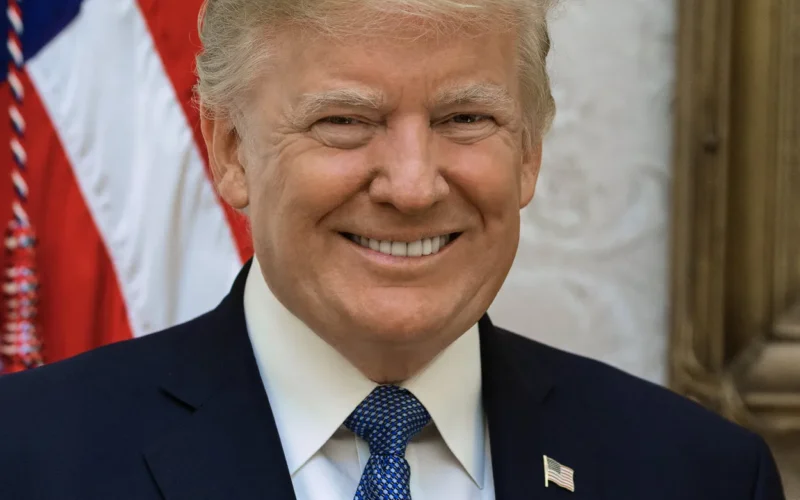When Donald Trump entered the White House in 2016, many in the sustainability community braced for impact. His policies, characterised by deregulation, support for fossil fuels, and withdrawal from the Paris Climate Agreement, seemed like a direct threat to the momentum of Environmental, Social, and Governance (ESG) progress. Yet, by the end of his term, an unexpected reality emerged: ESG not only survived—it thrived.
Now, as Trump returns to the White House as president-elect, the question arises: Could his second term once again act as an unintentional catalyst for ESG innovation and resilience? While his policies may challenge traditional frameworks, the lessons of the past suggest that adversity often sparks progress. Here’s why Trump’s presidency could be a surprising win for ESG.
During Trump’s first term, the private sector took centre stage in leading sustainability efforts. With federal regulations reduced, businesses filled the gap, driven by consumer demand, investor pressure, and global market expectations. Companies like Apple, Microsoft, and Walmart not only maintained their ESG commitments—they significantly expanded them. By 2020, U.S. assets under management in ESG funds had more than doubled to $17.1 trillion, and the number of ESG-focused funds grew from 280 in 2016 to over 800. The private sector demonstrated that sustainability was not merely an ethical choice but a strategic and financial imperative.
This shift coincided with a rapidly growing global market for low-carbon and sustainable products. In 2023, global investment in the low-carbon energy transition reached a record $1.77 trillion, spanning renewable energy, electrified transport, hydrogen, and carbon capture technologies. The renewable energy sector alone is projected to reach a market value of $1 trillion by 2050, rivaling today’s oil market. American companies are uniquely positioned to capitalise on these opportunities, but doing so requires aligning with global sustainability standards and embracing innovation. Any slowdown in these efforts could erode shareholder value and leave businesses struggling to remain competitive in a rapidly decarbonising global economy.
State and local governments also emerged as ESG champions during Trump’s first presidency. When federal climate leadership faltered, states like California stepped up with ambitious renewable energy targets and policies aligned with the Paris Agreement. The U.S. Climate Alliance, representing over 40% of the American population, further demonstrated that progress could thrive at the state level. These decentralised efforts proved that effective sustainability leadership does not always have to flow from Washington.
Even Trump’s support for fossil fuels inadvertently bolstered the renewable energy market. During his first term, U.S. solar capacity grew by 42 gigawatts, and wind capacity expanded by over 45 gigawatts. At the same time, the costs of solar energy fell by 37%, and wind energy costs dropped by 13%. Global investments in renewable energy surpassed $2 trillion, as markets leaned into clean technologies driven by undeniable economic advantages.
Technological advancements during this period also accelerated the clean energy transition. The cost of lithium-ion batteries, critical for energy storage and electric vehicles (EVs), fell by over 30%, while global EV sales grew by 160%, reaching 2.1 million units in 2019. These breakthroughs made clean technologies more accessible and further weakened the economic case for fossil fuels.
Social justice movements flourished in the face of polarising political rhetoric. Movements like Black Lives Matter and #MeToo gained traction, compelling businesses to prioritise diversity, equity, and inclusion (DEI). Governance practices were also strengthened as stakeholders demanded greater accountability and transparency. By 2020, over 70% of S&P 500 companies were publishing sustainability or corporate responsibility reports, many of which included robust DEI strategies. Additionally, 80% of these companies had adopted board diversity policies, up from just 62% in 2016.
Globally, the vacuum left by Trump’s retreat from international climate leadership spurred other nations into action. Europe introduced its Green Deal, and China pledged carbon neutrality by 2060, setting new benchmarks for sustainability. Over 80 countries implemented or strengthened ESG reporting mandates by 2020, a significant increase from fewer than 50 in 2016. These actions forced U.S.-based multinational corporations to align with global standards, indirectly driving progress domestically despite federal inertia.
However, the risks and losses experienced during Trump’s first term were a stark reminder of the cost of inaction. Between 2016 and 2020, the U.S. faced over $460 billion in climate-related damages from hurricanes, wildfires, floods, and droughts. These catastrophic events highlighted the urgent need for climate resilience and reinforced the financial stakes of ESG.
As Trump’s second presidency unfolds, the stakes for ESG have never been higher. Businesses must adapt to global trends and embrace innovation to remain competitive. American companies that seize this moment to invest in sustainability will position themselves as leaders in the rapidly evolving low-carbon economy.
“Trump’s presidency is a reminder that adversity can spark innovation,” says Rajesh Chhabara, Managing Director of CSRWorks International. “The global shift towards low-carbon economies is not just a trend—it’s an irreversible transformation. American companies that rise to meet this demand will not only weather political shifts but lead tomorrow’s markets. Resilience, innovation, and adaptability will define the ESG leaders of this decade.”
Trump’s return to the White House marks both a challenge and an opportunity. The global demand for low-carbon products and sustainable solutions continues to accelerate, presenting American companies with a critical choice: lead and benefit from the transition or risk falling behind. ESG won’t just endure—it will evolve, setting the stage for a more sustainable and equitable future. The question is no longer whether the ESG movement can withstand Trump’s policies—it’s how much stronger it will emerge because of them.

















